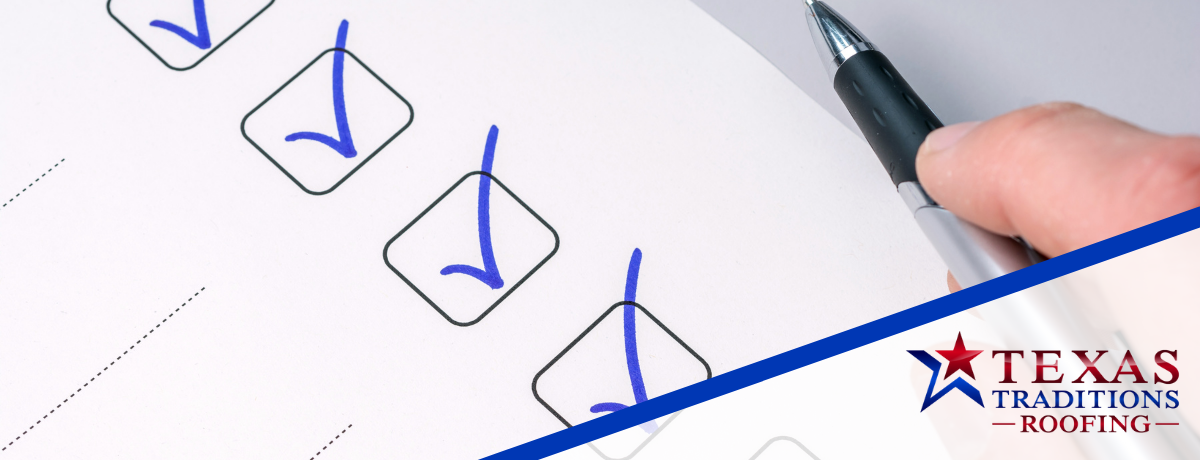
You undoubtedly have some fantastic shortcuts and excellent tips for performing your job, both earned by hard knocks and keen insights. Every business has these “insider tips,” and commercial roofing is no different. Here are ten terrific tips for putting together a can’t-miss commercial roofing checklist.
Prep Work
Before working with a commercial roofer to inspect your company’s low-slope or flat roof, do a tiny bit of prep work to prepare for the visit. Use common sense in deciding if your roof is safe for you or your own facilities crews to work on in preparation for the roofer’s inspection. Your crew may be able to safely perform some routine maintenance and cleaning on your roof, but if in doubt, lock ’em out!
When your local, trusted commercial roofer is on site, these initial steps will help make the inspection more efficient and more productive:
- Record Visits — Keep a running record of visitors to your commercial property’s roof and the reason they go topside. Where did they work on the roof and when were they there? This record can help determine high-traffic areas which need extra attention or potential sources of damage.
- Carry a Kit — Roofers have their own tools, but you can carry a toolkit for your roof inspection that includes a tape measure, this checklist, a notepad and pencil for recording data, roof plans or aerial photographs, a flashlight to peer into recesses, and a camera to record roof conditions.
- Rate It — At every area of your roof, actively judge its condition, giving it one of three ratings: Good (no attention needed); Fair (keep an eye on this spot); or Bad (immediate repair or attention needed!). Document every trouble spot with notes, pictures, and video.
Performing your own baseline inspection is always helpful, too, so you can track trouble spots and point to improvements and repairs done by your helpful, local roofer. The roof inspection can also help keep warranties in force.
Up Top
What are you and your roofer looking at on top of your roof? To begin, make absolutely certain your roof is safe for untrained personnel to navigate (“untrained personnel” means you and your facilities crew).
Roofers bring their own equipment and years of knowledge, so the inspection may be entirely on their shoulders. But if you can accompany your commercial roofing partner, be sure to check for these issues:
- Debris and Damage — Keep an eye out for obvious signs of debris littering your roof and any damage it may have caused. Pay special attention to blocked, broken, or slowly draining downspouts, gutters, scuppers, and internal drains.
- Wear and Tear — Typical trouble spots to watch include flashing, chimneys, seams, vents, fascia boards, drip edges, HVAC curbs, rubber boots, and mechanical fasteners in membrane roofing material. Also, keep an eye out for signs of corrosion or rust in metals and rot or cracks in wooden elements.
- Ponding and Punctures — With low-slope roofs, compressed insulation can mean ponding; look for punctures or tears in the membrane, blistering, or anything pulling away from the roof (at the roof perimeter or around HVAC curbs).
Keeping roof repairs small with prompt action can delay potentially budget-busting but necessary roof replacement.
Cozy Company
Even inside the cozy confines of your company’s building, you can learn a lot about your roof. You can do these steps before your roofing contractor arrives for a topside inspection, and they can be done periodically to spot minor issues fast:
- Walls — The state of your company building’s walls tell a lot about a roof. Do you see damp spots, dark stains, or peeling paint? Those are signals of a roof leak. With incoming water, you can expect mold and mildew and the stench they bring to follow.
- Chimneys — Around chimneys and vents, feel the wall for dampness or coldness. Flashing is supposed to bridge the gaps between roof and chimney or roof and vent, but failing flashing or loose caulking can let water slide inside.
- Ventilation — You may be able to get inside your roof deck (the space between the rooftop and your highest ceiling); if so, do you see light coming in from above? Are all structural members sound and intact, or can you see rot, cracked timbers, or corroded steel decking? Looking up, are sheathing, deck plates, and supports sagging?
- Leaks — Leaks are immediate causes of concern because they can raise humidity levels, ruin inventory, supplies, equipment, increase illness in employees, and leave behind mold and mildew that discourages customers. Document any active leaks and inform your commercial roofing partner immediately.
When you contact us at Texas Traditions Roofing, you start on a path to working with a trusted, experienced commercial roofing partner. We provide the commercial roof maintenance, repair, and replacement your company needs. We look forward to working with you!
